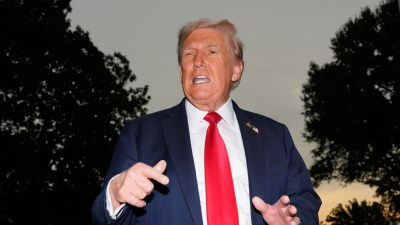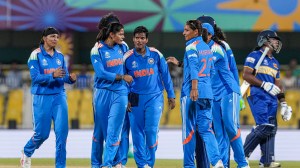December 2/3, 1984
When the lethal methyl isocyanante (MIC) gas leaked from the factory of Union Carbide India Limited (now Eveready Industries India Limited) ...

When the lethal methyl isocyanante (MIC) gas leaked from the factory of Union Carbide India Limited (now Eveready Industries India Limited) on the intervening night of December 2/3, 1984, it triggered off not just one mass disaster, but several of them. Armed with the Bhopal Gas Leak Disaster (Processing of Claims) Act, 1985, by which it became the sole plaintiff representing all the gas victims, the Union of India filed a suit for compensation against Union Carbide Corporation (UCC) in the court of Judge Keenan of the Southern District Court, New York.
Here UCC erected a preliminary defence. It sought to demonstrate that the proper forum for adjudication of this suit was not the court in New York but the one in India. UCC’s expert witness in those proceedings, Nani Palkhivala, stated: “There is no doubt that the Indian judicial system can fairly and satisfactorily handle the Bhopal litigation.” He was countering Union of India’s expert, Professor Marc S. Galanter’s prognosis that “at its best, the Indian legal system’s treatment of civil claims is slow and cumbrous.”
Palkhivala’s opinion persuaded Judge Keenan to dismiss the suit conditional upon UCC submitting to the jurisdiction of Indian courts. The award of interim relief of Rs 350 crore by the district judge, Bhopal, was challenged by UCC up to the Supreme Court. On February 14, ’89, the Supreme Court approved a settlement whereby UCC would pay the victims $470 million in full and final settlement of all civil and criminal claims, in present and in future.
Following a public outcry, review petitions were filed challenging the settlement principally on the grounds that the victims had not been consulted and that there was no in-built ‘re-opener clause’ to meet future claims. While admitting the review petitions, the Supreme Court conceded the inability of our legal system to secure immediate relief to the victims. It said: “the tremendous suffering of thousands of persons… should not be subordinated to the uncertain promises of the law.” The judgment, in 1991, in the review petitions, saw the court upholding the settlement of civil claims. It acknowledged that if the settlement fund was found inadequate to meet contingent claims the Union of India would “make good the deficiency, if any.” The criminal cases against UCC, UCIL and its officials for the charge of culpable homicide were directed to revive.
Twenty years after the disaster, neither has the relief to the victim been adequate nor has it been immediate. The settlement was premised on the figures of 3,000 dead and 100,000 injured. It was estimated that each death claim would be paid Rs 1 to 3 lakh, each injury claim in the range of Rs 25,000 to Rs 4 lakh depending on the severity. It now transpires these were underestimations five times the actual figures. The jurisdiction of suspicion has explained the functioning of the tribunals set up under the Claims Act. Of the over 10.3 lakh claims adjudicated by them, over 4.6 lakh claims were rejected outright. Many genuine victims were either completely excluded or their claims whittled down by arbitrary categorisation and re-categorisation on the basis of the injuries suffered.
The official figures released by the Office of the Welfare Commissioner in Bhopal reveal over 60 per cent of the 15,180 admitted death claims were converted into injury claims and even the 6,328 admitted death claims were awarded not more than Rs 1 lakh each. On an average, each of the 5.6 lakh admitted injury claims was settled for as little as Rs 26,000. Many of the victims have had to wait for over 12 years for their claims to be settled, with no interest and costs. The interim relief paid for a period of three years was deducted from the final sum and the lawyer’s fees had to be paid. The remainder of the paltry sum has had to be expended on health care and repayment of loans. Litigation fatigue deterred most from appealing further. The absence of legal aid exemplified by lawyers in Bhopal resorting to contingency fee arrangements was hardly offset by those litigating pro bono for victim groups in the Supreme Court.
The criminal trial of Warren Anderson and UCC, proclaimed absconders in February 1992, was separated from those of the Indian accused. In September 1996, the charges against the Indian accused were re-framed by the Supreme Court to “rash and negligent act” punishable with a maximum imprisonment of two years or with fine. The trial remains inconclusive before the chief judicial magistrate, Bhopal. The inexplicably belated request in 2003 by the Government of India to the US to extradite Warren Anderson has been turned down. This year, however, has witnessed positive developments. The court of appeals in the US ruled that a claim by Bhopal residents against UCC and Dow for toxic contamination of the groundwater and soil, in and around the plant site, was maintainable. The documents ‘discovered’ in those proceedings implicate the UCC not only for the disaster but also for the continuing toxic contamination of the plant site and surroundings. In July, the Supreme Court directed disbursement of the balance compensation of over Rs 1,503 crore pro-rata among victims whose claims had been settled. In August, it constituted an advisory and a monitoring committee to oversee medical research, relief and rehabilitation of the gas victims.
Nevertheless, a long unfinished agenda awaits attention. Indian civil law needs to be strengthened and, more importantly, strictly enforced, to make corporations liable for the irreversible harm they cause to humans and the environment through their hazardous activities. Criminal law requires to counter the impunity of MNCs committing crimes in vulnerable countries and vanishing through devices of takeovers and mergers.
It is a disturbing thought that if another Bhopal were to happen today, we may not respond differently despite the knowledge of earlier failures. If, indeed, the wind on the intervening night of December 2/3, 1984, had blown in a different direction, it is possible that attitudes and systems may have changed by now. We must salute the perseverance of the Bhopal victim in hoping and waiting for justice. We can ill afford complacency and pessimism in responding to their needs.
The writer is a Supreme Court advocate who has represented the Bhopal gas victims in several cases



- 01
- 02
- 03
- 04
- 05



























